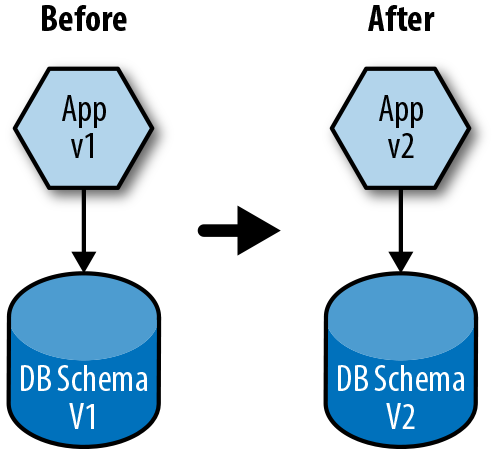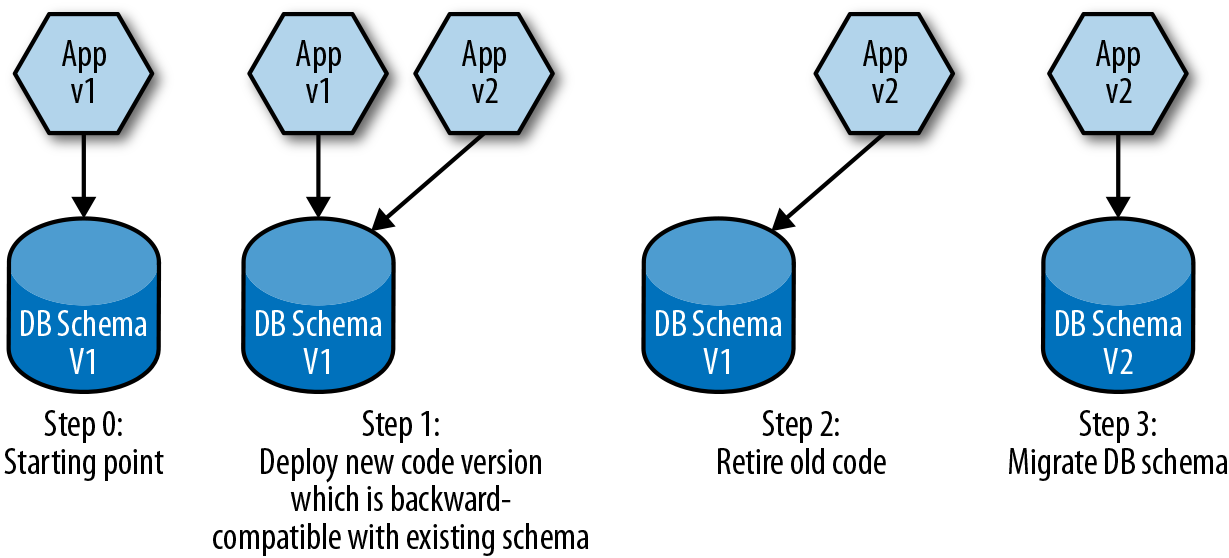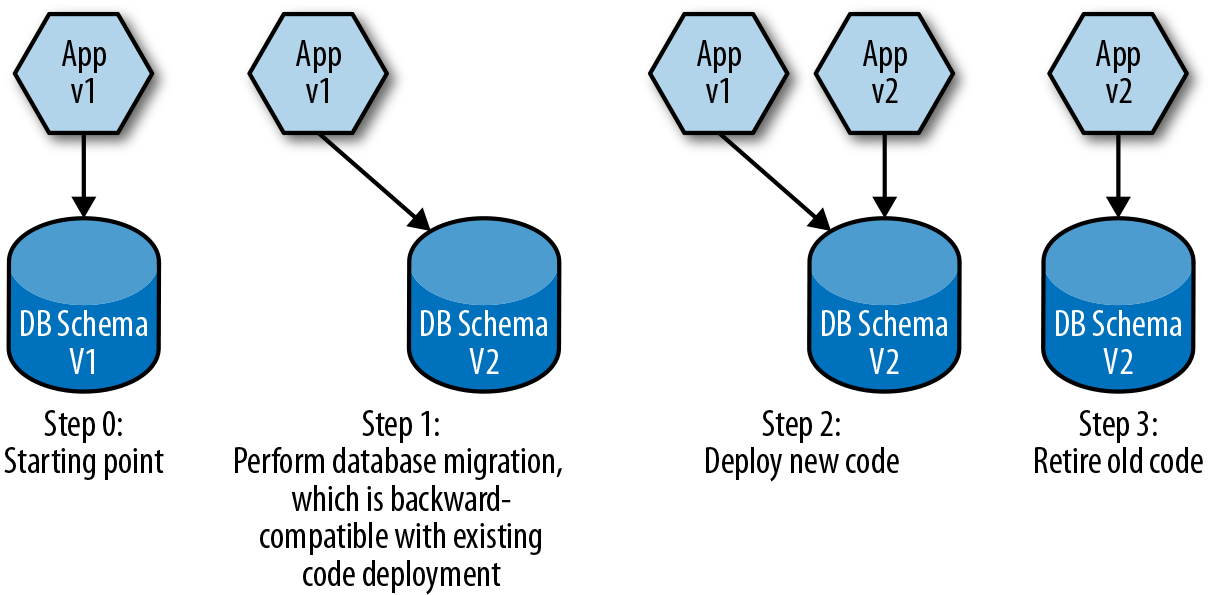Chapter 6. Best Practice #4: Incremental, Backward-Compatible Database Changes
Whenever we make code changes to a production system, we need to take existing database data—and, more generally, any shared persistent state—into account. The database schema in place needs to be compatible with the expectations of any newly deployed code; sometimes that means applying a migration to our database schema, as illustrated in Figure 6-1.

Figure 6-1. Database schema before and after migration
We can orchestrate a code deployment and its corresponding database migration in a few ways.
Code First
We can perform the code deployment first, shown in Figure 6-2, making sure that the new version of our code is backward-compatible with the existing database schema.

Figure 6-2. Code-first approach
Data First
Alternatively, we can perform our database migration first, as shown in Figure 6-3, which means that we must ensure that the new schema is backward-compatible with the existing code.

Figure 6-3. Data-first approach
Big Bang
In simple systems, there’s a third option (Figure 6-4): update data and code simultaneously in a lockstep deployment in which you stop your system, update your data ...
Get Feature Flag Best Practices now with the O’Reilly learning platform.
O’Reilly members experience books, live events, courses curated by job role, and more from O’Reilly and nearly 200 top publishers.

